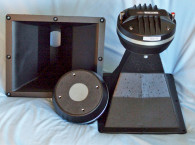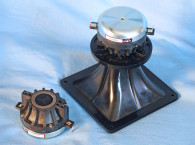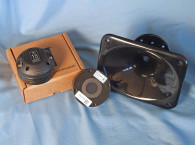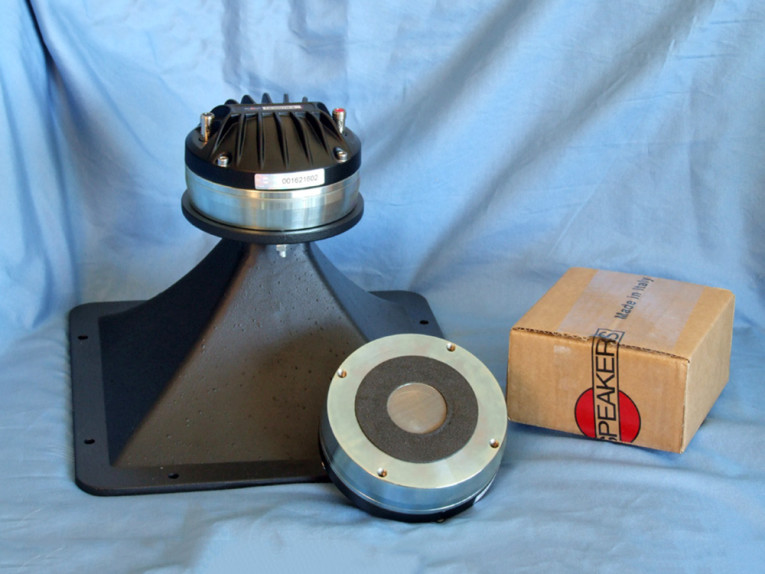

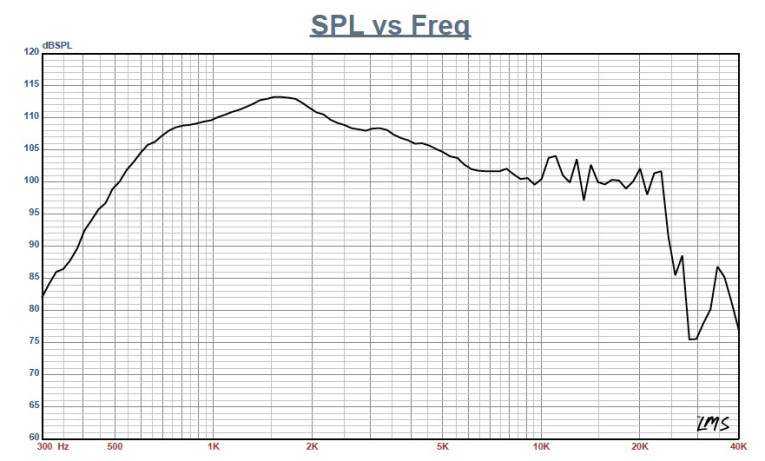
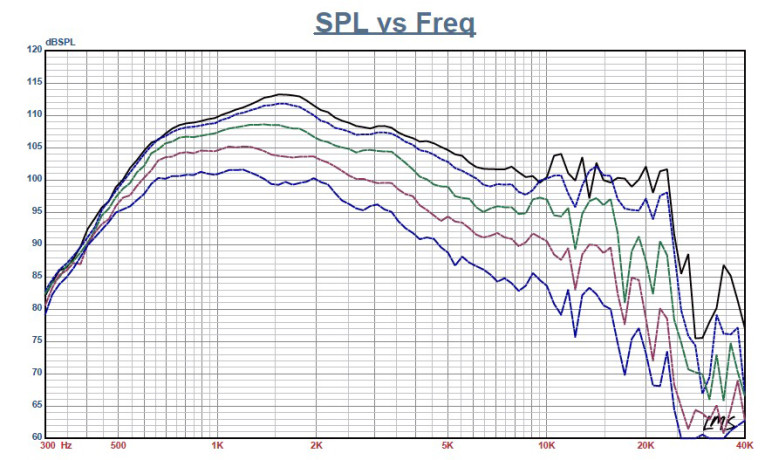
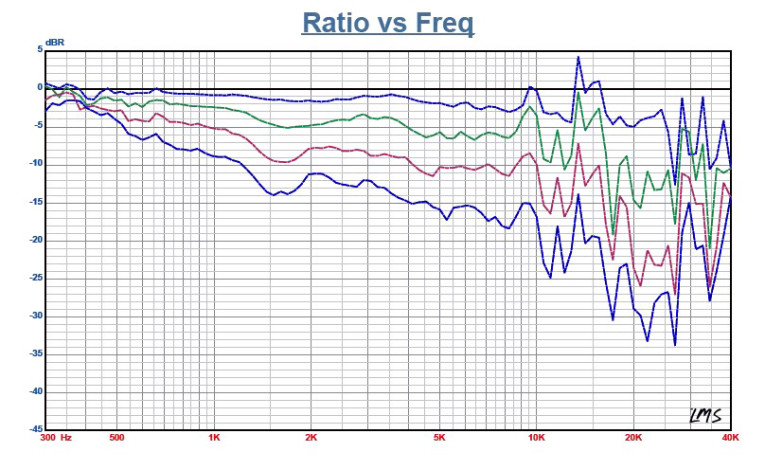
The DE990TN has a 36 mm (1.4”) throat diameter and is driven by a titanium diaphragm with a 86 mm (3.4”) diameter voice coil wound with aluminum wire. Other features include a neodymium ring magnet motor structure, nominal 100 W-rated power handling (200 W continuous), an injection-molded aluminum black heatsink, and color-coded chrome push terminals. The horn supplied with the DE990TN is B&C Speakers’ 1.4” throat 80°H × 60°V constant directivity cast aluminum ME90 horn with a 0.9 kHz cutoff frequency. Recommended crossover frequency for the DE990TN is 1 kHz.
I began testing using the LinearX LMS analyzer (Rest in peace Chris Strahm!) to produce the 300-point stepped sine wave impedance plot shown in Figure 1. The solid black curve represents the DE990TN mounted on the ME90 horn and the dashed blue curve represents the compression driver without the horn. With a 5.65 Ω DCR, the minimum impedance of the DE990TN/ME90 was 7.2 Ω and at 4.2 kHz.
For the next set of sound pressure level (SPL) measurements, I free-air mounted the DE990TN /ME90 without an enclosure and measured both the horizontal and vertical on and off axis at 2.83 V/1 m using a 100-point gated sine wave sweep from 0° on-axis to 60° off axis. Figure 2 displays the on-axis frequency response of the compression driver/horn combination, which is smooth with no major anomalies with a declining response as frequency increases above 1.8 kHz typical of constant directivity horns. As previously mentioned, B&C Speakers’ recommended crossover frequency for the DE990TN is 1 kHz with a second-order or higher high-pass filter. Figure 3 shows the on- and off-axis response in the horizontal plane. Figure 4 displays the normalized horizontal plane response.


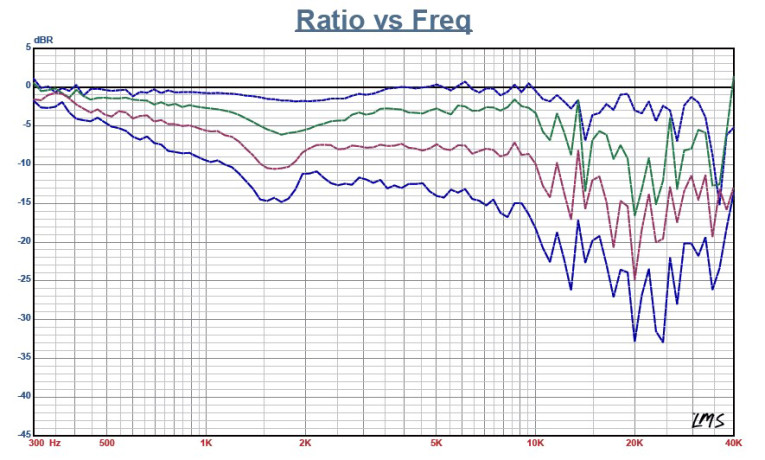

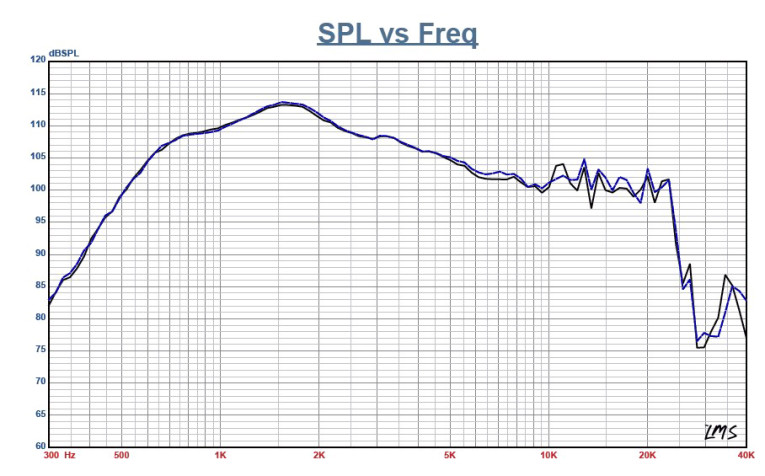
The CLIO Pocket analyzer generated the horizontal polar plot (in 10° increments with 1/3 octave smoothing applied) shown in Figure 5. Figure 6 gives the on and off-axis response in the vertical plane. Figure 7 depicts the normalized vertical plane response. Figure 8 shows the CLIO Pocket-generated polar plot (in 10° increments with 1/3 octave smoothing applied). Last, Figure 9 illustrates the two-sample SPL comparison, showing the two DE990TN compression driver samples to be very closely matched within less than 1 dB.
Next, I set up the Listen, Inc. AmpConnect ISC analyzer and 0.25” SCM microphone and power supply to measure distortion and generate time frequency plots. For the distortion measurement, I mounted the DE990TN/ME90 combination in free-air in the same manner as was used for the frequency response measurements, and set the SPL to 104 dB at 1 m (2.4 V determined by using a pink noise stimulus generator and internal SLM in the SC15 SoundCheck software). Then, I measured the distortion with the Listen microphone placed 10 cm from the mouth of the horn. This produced the distortion curves shown in Figure 10.
Following this test sequence, I then set up SoundCheck 15 to generate a 2.83 V/1 m impulse response curve for this driver/horn and imported the data into Listen’s SoundMap Time/Frequency software. Figure 11 shows the resulting cumulative spectral decay (CSD) waterfall plot. Figure 12 shows the Short Time Fourier Transform (STFT) plot.
Italian pro sound OEM B&C Speakers is a consistent manufacturer, with excellent build quality, performance, and engineering, and the new DE990TN certainly is all of that. For information, visit www.bcspeakers.com.


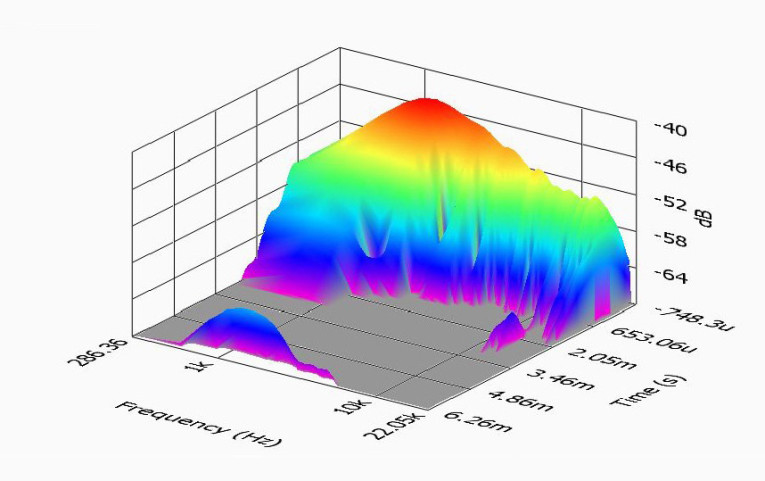
This article was originally published in Voice Coil, July 2017.





